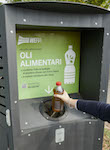Waste-to-energy plants: a resource for the circular economy
Focus
Focus
Category Facet
Custom Facet
Search Results
-
Web Content Article · By Antonio Filippone On Jul 21, 2025 2:47 PM
From carbon footprint monitoring to transforming plastic into an endlessly recyclable resource. This is how, together with Aliplast, we are committing to the transition to a circular economy.
Categoria Progetto: Innovation Innovation Categories: Regeneration of resources -
Web Content Article · By LUCIA ALGISI On Dec 18, 2024 11:20 PM
The connection between the water cycle and agriculture has grown increasingly strong over the years, based on a straightforward principle
Categoria Progetto: Innovation Water Project -
Web Content Article · By LUCIA ALGISI On Nov 29, 2023 2:30 PM
Early warning system with innovative FingerPrint technology to ensure safe water
Categoria Progetto: Innovation Water Project -
Web Content Article · By LUCIA ALGISI On Nov 29, 2023 2:35 PM
Discover the project for “removing and capturing” microcontaminants with recycled materials
Categoria Progetto: Innovation Water Project -
Web Content Article · By LUCIA ALGISI On Nov 29, 2023 12:05 PM
Hera continues experimentation of the innovative, fast and low-cost contactless system that uses space technology to detect water leaks in the network more quickly and productively
cosmicrays Categoria Progetto: Water Project Innovation -
Web Content Article · By LUCIA ALGISI On Nov 29, 2023 12:21 PM
The pilot project involving the installation of Kamstrup meters was carried out in Conselice, near Ravenna, and yielded excellent results. The tests now continue in Modena, covering a larger area
Categoria Progetto: Innovation Water Project -
Web Content Article · By Palvi Andrea Tonziello On Aug 4, 2020 5:25 PM
A revolution rooted in the circular economy: thanks to separate waste collection, organic waste is fed into an anaerobic digestion process to produce biogas.
circulareconomy Categoria Progetto: Innovation Heratech Project Innovation Categories: Regeneration of resources -
Web Content Article On Aug 4, 2020 5:14 PM
With the Geocall IT system, we have applied the benefits of digitalisation to our emergency response operations, making all relevant information available via smartphone. Find out how we have made...
-
Web Content Article On Aug 4, 2020 5:02 PM
Thanks to robotics and artificial intelligence, we can streamline our workflows and enhance the value of people and their intellectual capabilities. With the Robotic & Intelligent Process...
-
Web Content Article On Aug 4, 2020 4:39 PM
How do we monitor 6,600 plants and over 67,000 km of networks? With our Forlì Remote Control Technological Hub, which monitors operation in real time to detect failures and malfunctions of...
utility4.0 Categoria Progetto: Innovation -
Web Content Article On Aug 4, 2020 4:26 PM
We monitor the sewerage networks from high up on the European Space Agency's satellites to prevent any damage and take preventive action. Modena and Bologna lead the pilot project. Find out more.
Categoria Progetto: Water Project Innovation -
Web Content Article On Aug 4, 2020 4:21 PM
What's Ferrara's green secret? It lies underground, where a geothermal reservoir powers the city’s district heating system. As a result, 95% of the thermal energy distributed in the city is clean...
Categoria Progetto: Energy Efficiency Innovation Circular Economy Innovation Categories: Energy -
Web Content Article On Aug 4, 2020 4:19 PM
The ultrasound hydrolysis system, installed in the Forlì treatment plant, makes the life cycle of wastewater sludge circular. The result: less sludge to dispose of, and more biogas produced.
circulareconomy Categoria Progetto: Circular Economy Water Project Innovation -
Web Content Article On Aug 4, 2020 4:15 PM
Our 300,000 bins can “talk”. How? Thanks to a tag that allows us to always know where they are, how they are working, and whether they have been emptied. Discover more about HergoAmbiente, the Hera...
-
Web Content Article On Aug 4, 2020 4:07 PM
We have installed a turbo expander at the R&M stations of Ducati's factory in Bologna. The goal is to recover electricity from the decompression process of methane gas.
circulareconomy Categoria Progetto: Innovation Energy Efficiency -
Web Content Article On Aug 4, 2020 4:04 PM
Hera Group's drones are alternative and supplemental investigation tools to provide quality services to the areas we serve.
Categoria Progetto: Water Project Innovation -
Web Content Article On Aug 4, 2020 4:01 PM
From city to "smart city" thanks to data: with our detection systems we can monitor traffic trends, air quality and consumption of public parks.
utility4.0 Categoria Progetto: Innovation -
Web Content Article On Aug 4, 2020 3:46 PM
The Digital Workplace has transformed how we work, making office presence increasingly unnecessary, and fostering remote working and flexibility.
utility4.0 Categoria Progetto: Innovation -
Web Content Article On Aug 4, 2020 3:44 PM
The intelligent wastewater treatment plant in Modena and COSTANCE, the prototype facility in Granarolo dell’Emilia. Two best-in-class examples of sustainable water management
utility4.0 Categoria Progetto: Innovation Water Project Innovation Categories: Predictive technologies -
Web Content Article · By Palvi Andrea Tonziello On Aug 4, 2020 3:40 PM
With our digital payment solutions, you can pay your bills quickly, easily and securely, directly from your smartphone or home PC.
utility4.0 Categoria Progetto: Innovation
Asset Publisher
Producing electricity and heat from non-reusable waste. How? In a waste-to-energy plant: it's a safe and legally compliant plant and an energy resource for the local area.
A waste-to-energy plant, in fact, is a plant in which the heat from the combustion of waste is recovered to generate steam, which is then used to produce electricity or for district heating. link to the district heating page
Our nine waste-to-energy plants cover a catchment area of over 3 million inhabitants in the provinces of Ferrara, Modena, Bologna, Forlì-Cesena, Rimini, Isernia, Padua, and Trieste and "enhance" the heat produced for the benefit of the local area. How? By generating both electricity, fed into the Italian distribution network, and heat, sent to homes or users in the surrounding area, through a special distribution network.
HOW DOES A WASTE-TO-ENERGY PLANT WORK?
Watch the video for a quick and simple explanation of the basic operation of a waste-to-energy plant.
ARE WASTE-TO-ENERGY PLANTS DANGEROUS?
No. These plants are safe, compliant with the regulations, and contribute less than 1% of total emission sources for dioxins, PM10, NOx, and other major air pollutants (ISPRA data).
The only waste consists of ash (about 20% by weight of the treated waste) and particulate (about 3% by weight of the treated waste). Ash is generally used for recovery and production of secondary raw materials for the cement industry, while the particulate is stabilised to reduce any potential pollutants and make it suitable for disposal in an authorised plant.
Do you want to know more about our waste-to-energy plant emissions? Visit the section on our website.
The waste-to-energy plants are subject to constant monitoring and checks conducted by both Herambiente itself and competent agencies. Checks are carried out with the utmost transparency and anyone can verify the results: the main emission parameters are published and updated every half hour on the website www.herambiente.it. Transparency, in fact, has always been a value for Herambiente, since it manages waste and material and energy recovery activities without compromising the quality of the surrounding environment, with the utmost respect for the territory and adopting solutions with the lowest environmental impact.
Search Bar
Tag Facet
Search Results
Asset Publisher
Creating shared value report 2024

.jpg/5c532605-0938-031b-74ff-89388f7410d3)

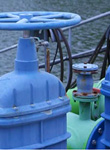
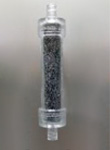
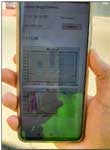
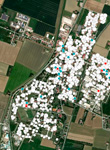
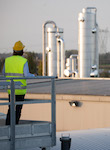
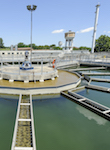
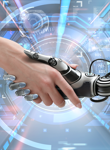
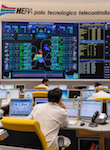



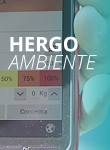
.jpg/468d051b-ba80-83a6-359d-7ef55eefd940)
.jpeg/1d0e0770-1094-b22b-fce4-099f27c72978)
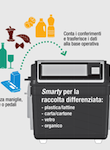

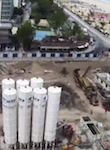
.png/02684bcc-be33-3bb3-daf4-5f1a2d9dac74)
